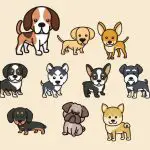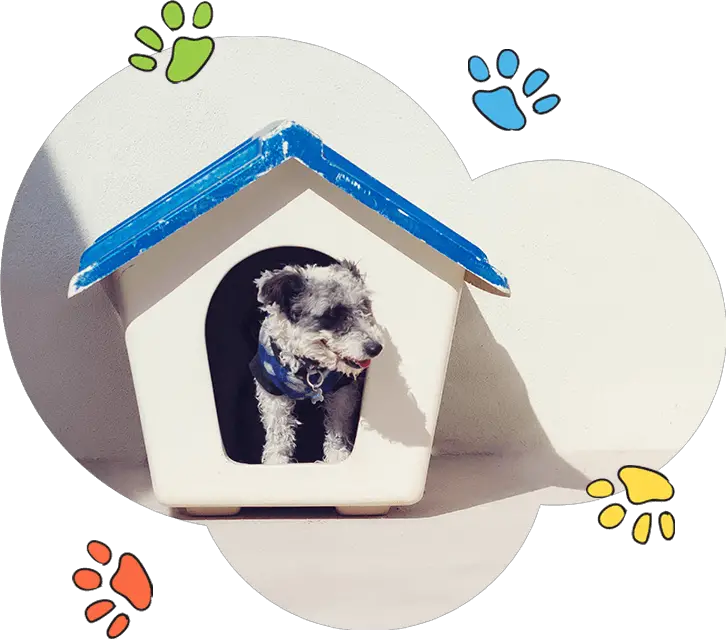Shih Tzu
Description:
The exotic looking Shih Tzu (pronounced SHEETsue and often misspelled as Shitzu) is one of the sturdiest and most robust of the toy dog breeds. In terms of weight it actually falls into the small dog weight category. This charming small dog has a rectangular build, broad chest, level back and short, sturdy legs with lots of hair. The Shih Tzu’s head is quite broad with a very short and square muzzle with the hair on the nose growing upwards giving the face its “chrysanthemum-like” look. The Shih Tzu’s eyes are large and dark in color and the ears are large and drooping with lots of hair that blends into the body. The Shih Tzu’s tail is well plumed, set high and carried over the back at the same height as the head. The Shih Tzu has a dense undercoat with a long, straight, soft and dense outer coat that can have some wave but no curl. The long hair on the head should be tied up to avoid scratching the eyes. The breed standard allows for all colors but parti-colored Shih Tzus should
have a white blaze on the forehead and the tip of the tail to do well in show competitions. Shih Tzus stand from 8 to 10.5 inches tall at shoulder height and weigh from 9 to 16 pounds. See additional information on choosing a Shih Tzu.
Shih Tzus are members of the American Kennel Club (AKC) Toy Dog Group.
Shih Tzu Pictures:
History:
The origins of the Shih Tzu are unknown but there have been a few theories put forward by historians. One theory claims there is evidence of the breed showing up in paintings and art of the Tang dynasty (618 to 907). Another popular theory has Tibet’s Dalai Lama in the 16th or 17th century giving a gift to the Chinese Emperor consisting of the sacred Tibetan Lhasa Apso dogs. In the Tibetan religion, Lamaism (a form of Buddhism) has stories about a small dog that can transform itself into a lion. These Tibetan Lhasa Apsos, with their leonine looks, were thought to be associated with this lion dog. When the Lhasa Apsos arrived in Peking they were crossed with Pekingese to produce the Shih Tzu which means “Lion Dog” in Chinese. The name “Lion Dog” is either a reference to the Shih Tzu’s parentage or more likely refers to the breeds flowing mane-like hair. Whatever the origin, it is known that the Shih Tzu was bred in the
Forbidden City of Peking for the royal family. The breed is also referred to as the “chrysanthemum-faced” dog because the facial hair grows in all different directions. Like many Chinese dog breeds, Shih Tzus almost became extinct when the Chinese Communist government imposed a steep dog tax in 1947. Fortunately prior to this, seven breeding pairs of Shih Tzus were exported to England and Norway and constituted the entire gene pool of the breed. In the late 1940’s, returning military personnel brought the breed back to the US where it has become extremely popular. Additional information on the Chinese dog breeds can be found in our article The Year of the Dog. The Shih Tzu was ranked 9th out of 154 dog breeds registered by the AKC in 2005.
Temperament:
Shih Tzus are intelligent, playful, affectionate, self confident and outgoing. Shih Tzus make great apartment dogs and companion dogs for the elderly. These charming and personable dogs are devoted to their owners and their families. Shih Tzus are outgoing and friendly and like just about everyone. They make great traveling companions and rarely show any aggressive behavior toward strangers or strange animals. The breed is easily cowed by toddlers and small children who are too rough for this small dog. However the breed gets along extremely well with older, considerate children. Shih Tzus respond very well to reward-based (food and praise) training for the small amount of training they require. However the breed is extremely difficult to house train (see our free Report on Puppy Training) and if you are still having some problems after 3 months – get professional help. This breed loves to be the center of attention and will take all
the pampering you can provide.
Exercise:
Shih Tzus enjoy a daily walk but like most short-faced dogs do not do well in hot and humid weather. The breed is very adaptable and if you are a keen walker, then the Shih Tzu is quite happy to accompany you but it is also quite happy if you want to stay home. Shih Tzus make great apartment dogs and can adapt to being left alone during the day as long as they get plenty of attention and play time before and after work.
Grooming:
A Shih Tzu requires a lot of grooming to keep it looking good. The double coat needs to be brushed and combed thoroughly every day to prevent tangles. The long hair on the head can scratch the dog’s eyes and should be tied up with a hair band. The beard and moustache should be combed daily and the dog’s bottom checked for cleanliness. Shih Tzu owners who are not planning to show their dogs should consider getting their coats trimmed and clipped to a 4 inch length every six weeks. Although this will change the breed characteristics, it is better to have a clipped Shih Tzu than one that is full of tangles. Remember to check the eyes and ears on a regular basis.
Health Issues:
Shih Tzus can be expected to live for 10 to 14 years. The breed has a number of common health problems including: brachiocephalic syndrome (respiratory problems); eye and eyelid disorders such as cataracts, progressive retinal atrophy, KLS (dry-eye), entropion, ectropion, and eye lacerations; orthopedic problems such as patellar luxation and intervertebral disc disease; kidney problems; von Willebrands disease (mild bleeding disorder); and ear infections. Information on some of these genetic diseases can be found in our article Hereditary Diseases in Dogs. Prospective buyers should ask for the breeding parents Orthopedic Foundation for Animals (OFA) test results and also the Canine Eye Registry (CERF) recent ophthalmologists report for eye disorders.
Article type: xdogbreed


